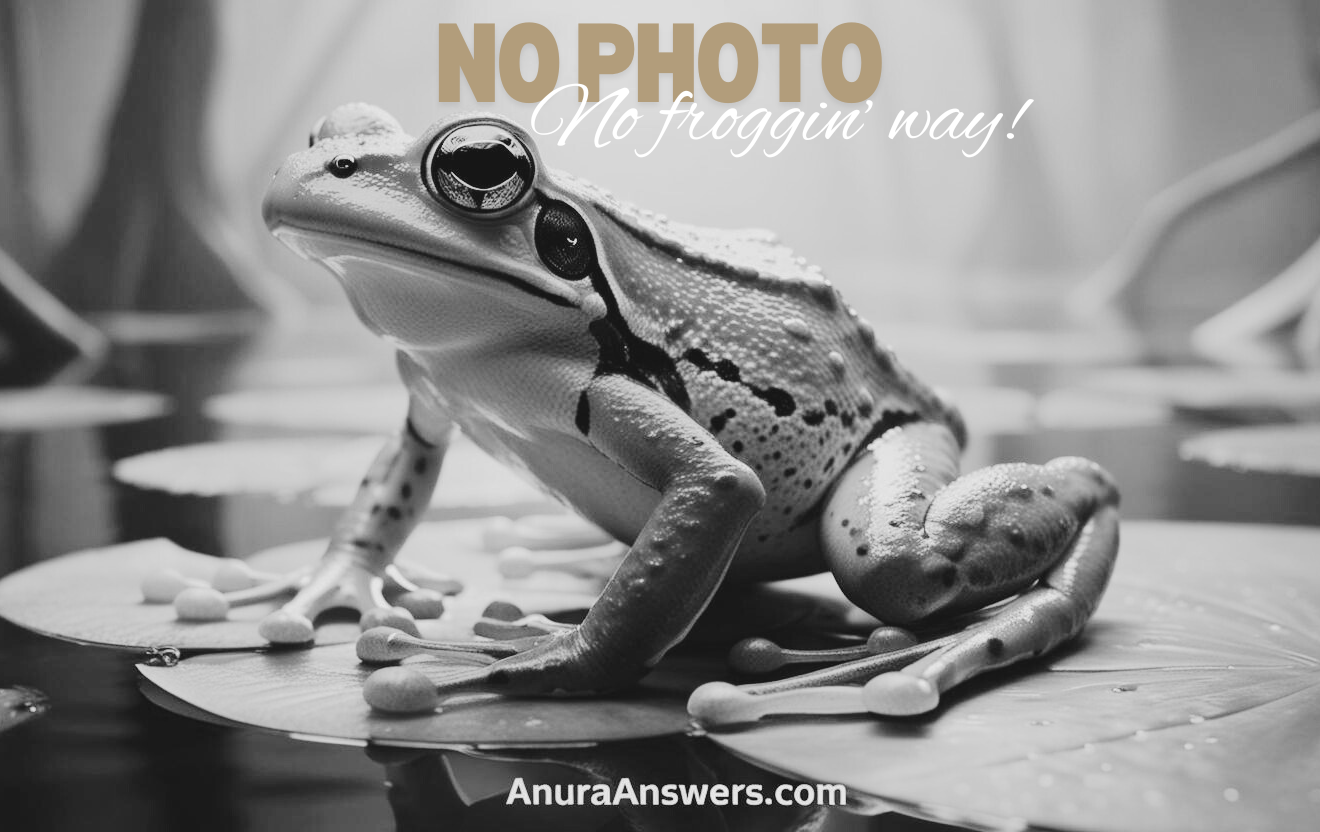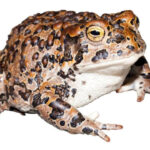- Introduction: Meet Amazophrynella bilinguis, the Two-Tongued Amazonian Wonder
- Taxonomy and Classification: A Unique Place in Evolutionary History
- Natural Habitat: Secretive Residents of the Amazon Floor
- Physical Characteristics: Mastering the Art of Camouflage
- Behavior and Life Cycle: From Tadpole to Tiny Forest Guardian
- Ecological Role: Guardians of Balance
- Threats and Conservation Status: Facing Challenges in a Changing World
- Cultural and Scientific Significance: Insights and Inspirations from a Tiny Amphibian
- Conclusion: Cherishing Amazophrynella bilinguis, a Fragile Jewel of the Amazon
Introduction: Meet Amazophrynella bilinguis, the Two-Tongued Amazonian Wonder#
Tucked away beneath the vibrant canopy of the Amazon rainforest lies an inconspicuous yet extraordinary creature—the Amazophrynella bilinguis. Known colloquially as the “Two-Tongued Amazonian frog,” this tiny amphibian has piqued the curiosity of ecologists and everyday wildlife lovers alike. The species name “bilinguis,” that translates roughly to “two tongues,” hints intriguingly at some curious scientific discovery related to its taxonomy rather than an actual physiological trait. Measuring no more than a few centimeters, this amphibian is surprisingly hardy and holds crucial ecological importance within its lush rainforest home.
Though often overlooked due to their minuscule size, the Amazophrynella bilinguis presents an exceptional case study in evolutionary adaptation, camouflage, and ecological balance. For anyone fascinated by the intricate tapestry of wildlife found in the Amazon, this bright-eyed frog is proof that small creatures often have awe-inspiring stories to tell.
Taxonomy and Classification: A Unique Place in Evolutionary History#
Belonging to the Bufonidae family—the group commonly recognized as true toads—Amazophrynella bilinguis has experienced recent recognition due to thorough genetic and morphological analyses. Falling under the Amazophrynella genus, this species shares its lineage with appropriate close relatives who equally depend on the distinct Amazonian habitats. In recent years, scientists have discovered that seemingly identical frog populations throughout the Amazon basin hold hidden genetic distinctions, prompting experts to redefine relationships between similar yet distinct frog species.
The epithet “bilinguis” underscores the intriguing duality of identity scientists initially grappled with while classifying this tiny amphibian, highlighting how subtle differences in genetics and morphology can lead to significantly divergent ecological niches. Today’s classification continues to evolve, underlining the complexity and fluidity inherent in understanding Amazonian biodiversity.
Natural Habitat: Secretive Residents of the Amazon Floor#
Geographic Range and Distribution#
True children of the rainforest, Amazophrynella bilinguis call the dense and humid lowland forests of the Amazon basin their exclusive home. They primarily populate the rich, tropical areas of Ecuador, Colombia, Peru, and Brazil. Although their range is extensive geographically, the frogs themselves are challenging to spot amidst the leaf litter, fallen bark, and damp soil where they make their inconspicuous homes.
Habitat Preferences and Adaptations#
This diminutive amphibian thrives near slow-moving streams, marshy areas, and continuously moistened forest floors blessed by regular, sustaining rainfall. Remarkably adapted to humid and shaded forest microhabitats, Amazophrynella bilinguis spends its days quietly concealed in hidden crevices, beneath decaying leaves, and among the tangled roots that snake across the forest soil. Amidst these humid shadows, their cryptically patterned skin offers nearly flawless camouflage against predators.
To appreciate this amphibian’s existence is to step carefully along moss-clad branches and feel the forest floor spongy beneath one’s feet. In the perpetual twilight below the forest canopy, each moment of survival for this tiny frog represents an intimate dance with the complexities of the rainforest ecosystem.
Physical Characteristics: Mastering the Art of Camouflage#
At first glance, Amazophrynella bilinguis may appear modest and relatively plain. Measuring merely 2–3 centimeters, this pint-sized amphibian holds subtle yet fascinating features adapted precisely for life hidden within the leafy shadows. Its body shape is characteristically robust, reminiscent of other true toads—stocky legs, short noses, and rounded bodies.
Coloration is perhaps its greatest survival mechanism—variegated shades of brown, green, and grey, often laced with subtle patterns of darker spots or streaks. Their incredibly sensitive and permeable skin allows them to constantly gauge the humidity and moisture of their habitat, ensuring a delicate equilibrium crucial for survival in their fragile, tropical climate.
Camouflage sophistication extends beyond mere mimicry of bark and leaf litter. Amazophrynella bilinguis’s small stature helps it remain invisible to most forest inhabitants, deftly avoiding the hungry gaze of predators. Despite their diminutive physique, they boast powerful limbs capable of swift and precise leaps, quick enough to elude a predator’s strike and melt seamlessly back into their shadowy world.
Behavior and Life Cycle: From Tadpole to Tiny Forest Guardian#
Diet and Hunting Tactics#
Life as a miniature frog demands resourcefulness. Amazophrynella bilinguis primarily subsists on a diet of tiny insects and larvae. Employing an ambush strategy, it blends seamlessly into its surroundings and patiently waits, sensing the tiny movements of ants, mosquitoes, spiders, and termites. Upon detection of prey, this agile amphibian leaps forward, extending a sticky tongue with uncanny precision, capturing its meal in one swift move.
Breeding Behaviors and Life Cycle#
The rainy season signals the start of breeding rituals for Amazophrynella bilinguis. Like many amphibians, males gather near moist nursery habitats and begin melodious yet subtle calls, encouraging females to approach for mating. These calls—soft chirps and escalating trills—form a gentle choir echoing quietly within the twilight canopy backdrop.
Females carefully deposit eggs in shallow waters, sometimes hidden among submerged foliage or in tiny depressions filled with rainfall. From these delicate clusters hatch diminutive tadpoles, perfectly adapted to survive the precarious conditions of their forest pools. Over weeks, tadpoles metamorphose into miniature replicas of their parents, venturing carefully onto land to begin life amid the challenges and beauty of the Amazon rainforest.
Ecological Role: Guardians of Balance#
Though easily overlooked due to size and camouflage, these frogs fulfill vital ecological roles. Amazophrynella bilinguis acts as a predator controlling insect populations, maintaining equilibrium throughout the microhabitats it occupies. Without their vigilant hunting, insect populations could easily become unbalanced, impacting local plant communities and wider prey-predator dynamics.
Simultaneously, these frogs provide nourishment for numerous bird, reptilian, and mammalian predators who rely on smaller prey. Consequently, even a modest amphibian plays an essential part in the delicate dance of rainforest biodiversity, hinting at complex ecological webs we are still discovering and unraveling.
Threats and Conservation Status: Facing Challenges in a Changing World#
Habitat Loss and Environmental Threats#
Despite residing in relatively remote rainforest locales, Amazophrynella bilinguis faces increasing threats from habitat disturbance, deforestation, and agriculture-driven land clearance. As pristine rainforests shrink, frogs become increasingly isolated within dwindling patches of suitable habitat, intensifying vulnerability and reducing survival prospects.
Beyond habitat destruction, climate shifts pose substantial risks. Shifts in rainfall patterns, increasing drought intensity, or unusual flooding events disturb the species’ delicate reproductive cycles, threatening their already fragile populations.
Current Conservation Efforts and IUCN Insights#
While research on their precise conservation status remains limited, the IUCN Red List acknowledges Amazophrynella bilinguis as a species of ongoing scientific interest. Unfortunately, insufficient data currently categorize it as “Data Deficient,” making long-term conservation planning challenging yet all the more necessary.
Local conservation initiatives currently emphasize habitat protection, ecological surveys, and species education, empowering communities within the Amazon region toward sustainable practices that safeguard amphibian populations and overall ecosystem health.
Cultural and Scientific Significance: Insights and Inspirations from a Tiny Amphibian#
Though obscure in popular culture, Amazophrynella bilinguis has immense scientific value. Its genetic diversity contributes critical insights into the evolutionary processes guiding biodiversity in the Amazon. Amphibians such as this represent living barometers of habitat health, signaling broader ecological changes that scientists continue monitoring carefully.
Additionally, as researchers explore its unique adaptations and behaviors, Amazophrynella bilinguis demonstrates the importance of preserving biodiversity for future scientific discovery. Every year, researchers unravel new secrets from these remarkable amphibians, underscoring urgent preservation and stewardship needs.
Conclusion: Cherishing Amazophrynella bilinguis, a Fragile Jewel of the Amazon#
While small and concealed from the casual observer, Amazophrynella bilinguis undeniably holds great importance in maintaining the health and diversity of their rainforest homes. Their future is inextricably linked to ongoing rainforest conservation efforts emphasizing habitat preservation, education, and scientific research.
As ambassadors of ecological integrity and indicators of environmental equilibrium, frogs like Amazophrynella bilinguis remind us continually: no organism is too small or obscure to nurture, protect, and respect. Perhaps, hidden within their humble lives, lies a message about our own interconnectedness with the richly woven biodiversity of the Amazon.







